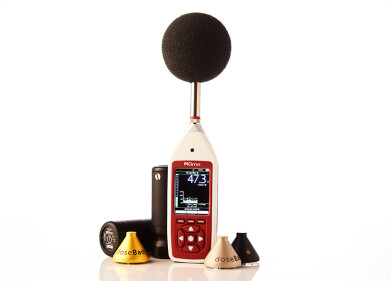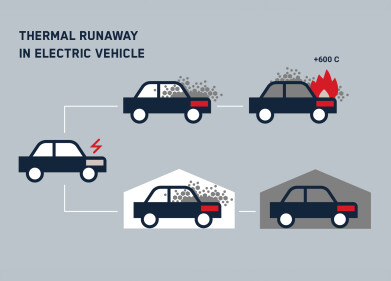Health & safety
How Harmful are VOCs to Health?
Nov 19 2021
Most of us don’t even notice all of the copiers and Sharpies, anti-bac sprays and Pritt Sticks that we encounter on a daily basis – they’re just bland, unremarkable features of our landscape. But all of these objects, and many more, may be concealing a danger behind their boring exteriors.
That danger’s name: volatile organic compounds. Scary, right?
What are volatile organic compounds?
If you want a properly thorough scientific explanation of what VOCs are, you’ll have to read our longer article on What Exactly Are Volatile Organic Compounds (VOCs)? But, in brief, VOCs are compounds wholly or partially composed of carbon atoms bonded either with carbon atoms or other elements that evaporate significantly at room temperature and are mostly insoluble in water. And they’re in everything. They’re in paints, paint strippers, cleaning supplies, pesticides, building materials, copiers, copy paper, printers, glues, adhesive tape, plasters, wood varnish, nail varnish, lip-sticks, air fresheners, permanent markers – the list goes on.
So, as you can probably tell, it’s kind of important to find out whether volatile organic compounds are safe, or not.
How are we exposed to volatile organic compounds?
For the most part, humans ingest VOCs through inhalation or through contact with the eyes or skin – as with pretty much all pollutants, volatile organic compounds are most dangerous when inhaled, as the vapourised compounds are able to pass through the thin membrane of the lungs into the blood-stream. Such exposure is possible in a wide variety of circumstances – take a look at our article on the most at-risk workplaces.
What are the effects of exposure to VOCs?
According to the Environmental Protection Agency, the United States’ federal institution responsible for regulating and monitoring pollution, volatile organic compounds like benzene and methylene chloride, two VOCs which can be found in most paints, are carcinogens. In particular, exposure to vapourised benzene is explicitly linked to anaemia and leukaemia. For targeted solutions to benzene exposure, have a watch of this seminar on the topic, produced by one of our partners, Ion Science Ltd. – just click through to the link and register to access a recording of the discussion.
In general, ingestion of volatile organic compounds induces effects ranging from mild epidermal irritation and irritation of the respiratory tract to generalised corruption of the central nervous system and many forms of cancer. Of course, the long-term neurological symptoms are the most worrying, with the drastic impairment memory, reaction times, balance and hand-eye co-ordination being significant, life-changing consequences. Even the minor, peripheral effects are troubling, including as they do tremors and inhibited motor function – and that’s not to mention the potential mood-disequilibrating effects, like irritability, depression and fatigue.
Perhaps more frightening than the effects themselves, however, is the long incubation period, measured in months and years, before such nasty symptoms begin to present. Unfortunately, this is even the case with low-level exposure.
What can you do about exposure to volatile organic compounds?
The first necessity is detection, of course. Without knowing which VOCs are present and in what concentration, you won’t know the risks. So, the question becomes: how can you effectively detect volatile organic compounds?
Well, as we have already discussed, VOCs are most dangerous when inhaled, so monitoring air quality, especially indoor air quality, is a priority. In order to do this, then, you’ll need an instrument capable of continuous emission monitoring.
Continuous emission monitoring (CEM) is a method designed to determine the concentration of specified contaminants in the air, mainly using a sample probe to collect the sample, an analyser to determine concentrations and some sort of filtration system to obstruct materials which threaten the system. Such systems come in all shapes and sizes – there’s bound to be one perfectly tailored to all of your particular needs. For more information on CEM and its applications, it’s worth looking through our recently-published guide to Continuous Emission Monitoring.
Digital Edition
IET 35.2 March
April 2025
Air Monitoring - Probe Sampling in Hazardous Areas Under Extreme Conditions - New, Game-Changing Sensor for Methane Emissions - Blue Sky Thinking: a 50-year Retrospective on Technological Prog...
View all digital editions
Events
May 10 2025 Karachi, Pakistan
May 11 2025 Vienna, Austria
May 11 2025 Seoul, South Korea
Salon Analyse Industrielle & Instrumentation
May 14 2025 Paris, France
May 15 2025 Istanbul, Turkey






_(4427399123)-(2).jpg)












